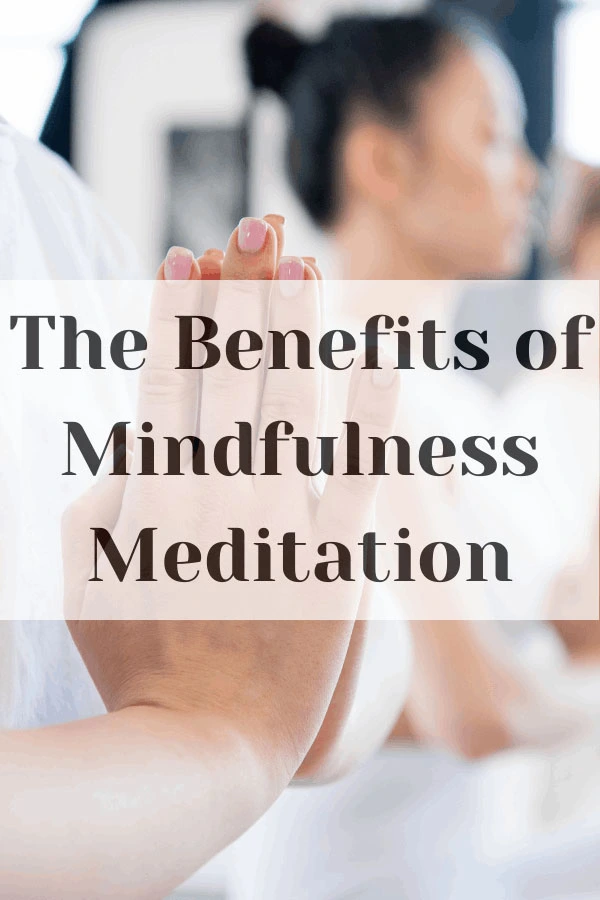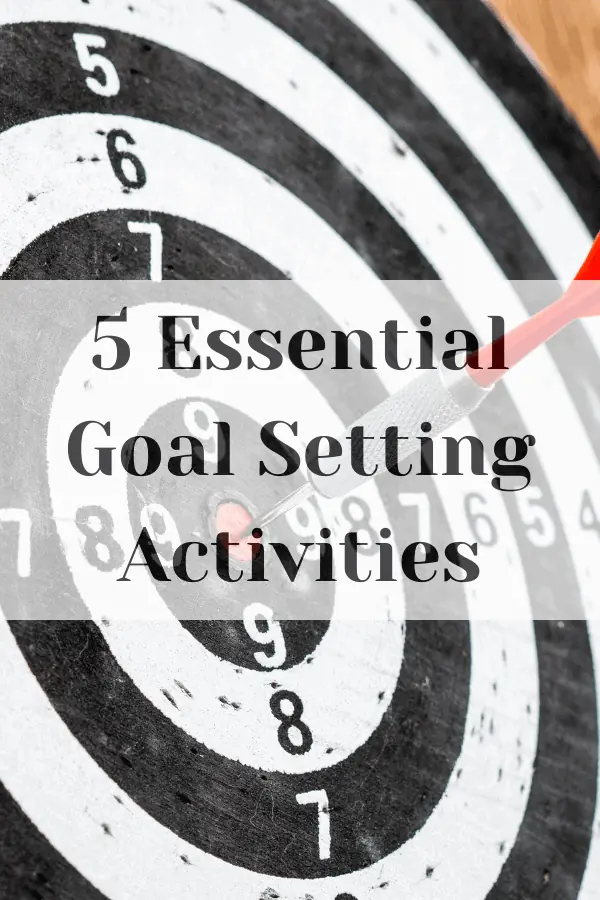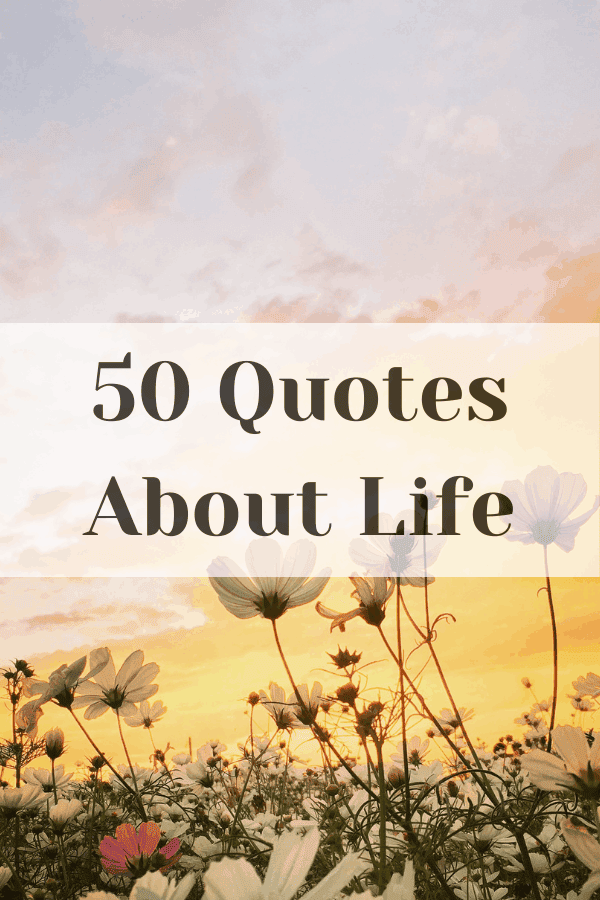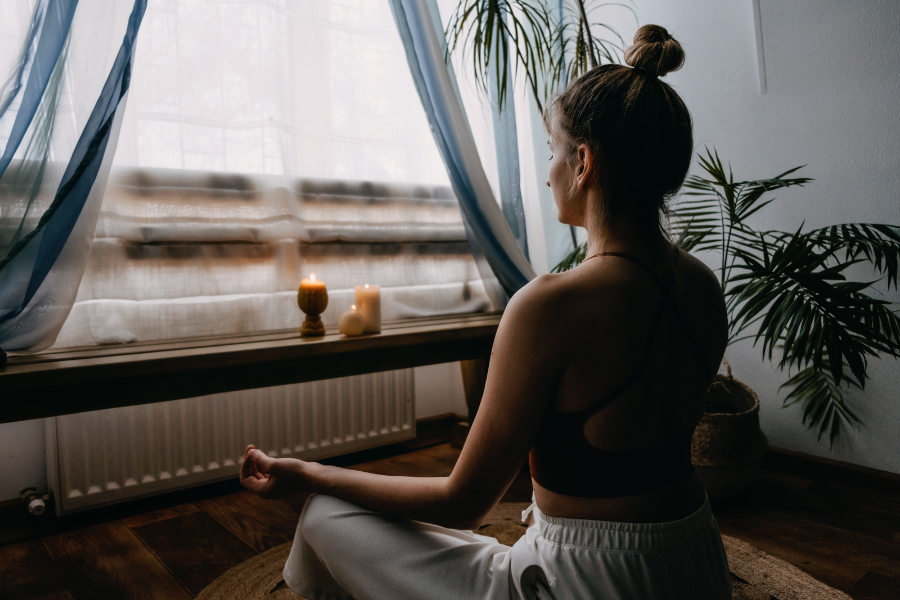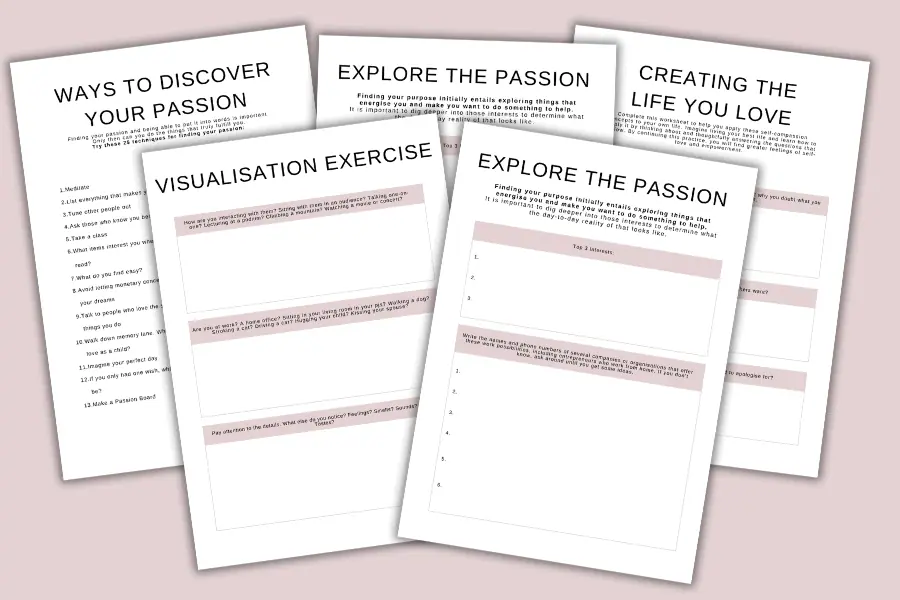7 Easy Steps For Visualisation Meditation
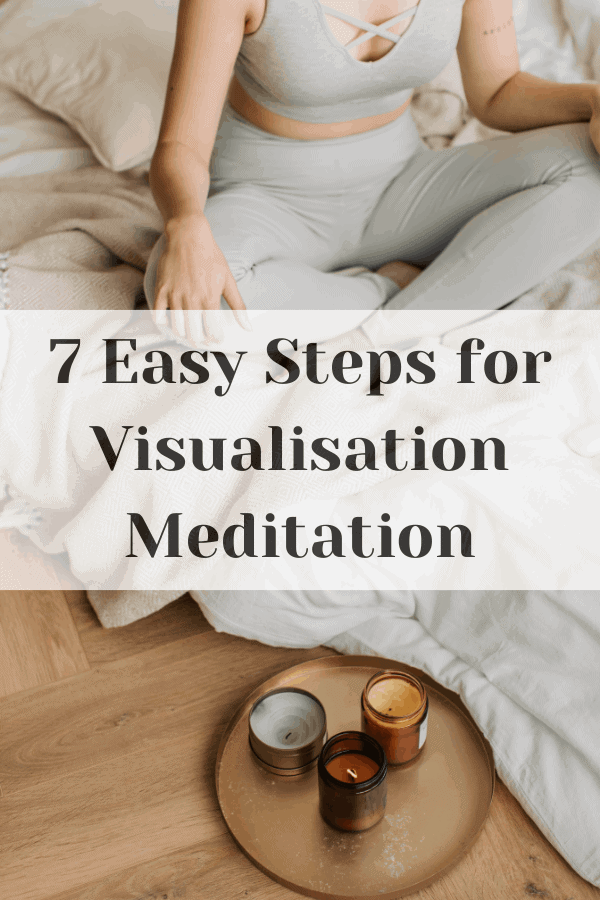
Welcome to the soothing realm of visualisation meditation, where the power of your imagination becomes the gateway to tranquillity. In this brief exploration, we’ll unravel the essence of visualisation meditation and uncover why it has become a cherished practice for many seeking inner peace and mental clarity.
Visualisation meditation adds a dynamic layer to your meditative experience, transforming it from a simple practice to a holistic journey. This is not just about stillness; it’s about actively engaging your mind to sculpt landscapes of peace. As we proceed, you’ll understand how visualisation acts as a catalyst, amplifying the benefits of meditation and fostering a profound sense of harmony within.
So, let’s embark on this visual journey together, exploring the depths of visualisation meditation and embracing the tranquillity as it unfolds. Get ready to unlock the potential of your imagination, as we discover the art of finding calm in the vivid tapestry of your own thoughts.
This blog post is about visualisation meditation
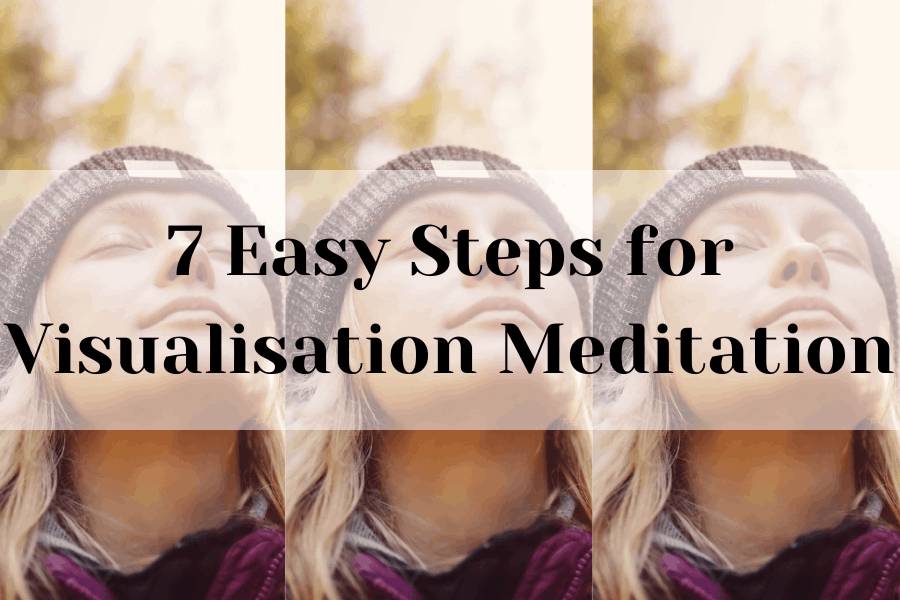
What is Visualisation Mediation?
Dive with me into the heart of visualisation meditation, where the art of seeing with the mind’s eye transforms the way we experience inner peace.
Definition and core concept
At its core, visualisation meditation is an imaginative practice that invites you to create vivid mental images, sculpting scenes, and scenarios in your consciousness. It’s a dance between your thoughts and your imagination, a journey where the mind becomes a canvas, and you hold the brush. Unlike other meditation techniques that may focus on breath or mantras, here, the spotlight is on the power of visualisation to guide your mindfulness.
As you close your eyes, your mind becomes a theatre, and you are both the playwright and the audience. You craft scenes that evoke calmness, positivity, and introspection. Whether it’s envisioning a serene beach, a peaceful forest glade, or simply visualising your goals, this practice adds a dynamic, creative element to your meditative moments.
How it differs from other meditation techniques
Now, you might wonder, “How is visualisation meditation different from other meditation methods?” While traditional practices often involve focusing on breath or achieving a state of thoughtless awareness, visualisation stands out as an active engagement of the mind. It’s an intentional creation of mental images that serve as anchors for your attention. This unique approach provides a tangible point of focus, helping to quiet the mind and deepen your meditative experience.
Historical roots
While visualisation meditation may not have specific historical roots tied to a particular culture, its principles can be found in various ancient practices. Cultures worldwide have recognised the power of mental imagery for centuries, incorporating it into rituals, ceremonies, and healing traditions. Whether it’s the use of guided imagery in ancient Greece or the visualisation techniques in certain branches of Eastern philosophy, the universal theme is the acknowledgement of the mind’s ability to shape our reality.
As we journey deeper into the realms of visualisation meditation, we’ll continue to unravel its intricacies, understanding how this imaginative practice has found its place as a transformative force in the landscape of mindfulness.
Getting Started with Visualisation Meditation
Embarking on the enchanting voyage of visualisation meditation begins with finding your sanctuary, a space where tranquillity can embrace you.
Finding a comfortable space
Create a haven for your practice, a space where distractions melt away. It doesn’t need to be grand – a cosy corner or a favourite chair will do. The essence is to feel at ease. As you settle into your chosen spot, let the surroundings become a backdrop for your journey within.
Relaxation techniques to begin
Before diving into the imagery of the mind, let’s embrace a moment of physical calm. Relaxation techniques serve as gentle gateways, inviting you to release tension and welcome serenity. Simple stretches or progressive muscle relaxation can be your allies here, preparing both body and mind for the upcoming exploration.
Importance of deep, calming breaths
Now, let’s tune into the breath, the silent conductor of the meditation orchestra. In the realm of visualisation meditation, the breath becomes the rhythm, guiding your mental dance. Take deep, intentional breaths. Feel the air filling your lungs, then slowly releasing. Each breath is a bridge between the outer world and your inner sanctuary, fostering a connection that amplifies the power of your visualisations.
Clearing the mind for better visualisation
Imagine your mind as a clear sky, and thoughts, mere clouds passing by. To enhance your visualisation meditation, begin by acknowledging and gently releasing any lingering mental clouds. This isn’t about emptying the mind but creating space. Picture each distracting thought drifting away, leaving behind a serene canvas for your visualisations to unfold.
In this starting chapter of your visualisation meditation journey, setting the stage is key. As you find your space, embrace relaxation, breathe deeply, and clear the mental landscape, you pave the way for a more immersive and transformative experience. Join me as we progress deeper into the heart of this practice, where the magic of imagination meets the serenity of mindfulness.
The Basics of Visualisation
As we delve into the core of visualisation meditation, let’s uncover the art of sculpting mental landscapes and explore how the basics of this practice can deepen your connection to inner calm.
Focusing on a mental image
Central to visualisation meditation is the art of focusing on a mental image. Picture it like tuning into your favourite movie, but this time, you’re the director and star. Choose an image that resonates with you – it could be a serene beach, a lush forest, or even a symbol representing your goals. As you dive into this mental canvas, let the details unfold. Engage with the colours, textures, and sensations, allowing the chosen image to become a serene refuge in the theatre of your mind.
Incorporating the five senses
Take your visualisation to the next level by engaging all your senses. It’s not just about what you see but what you feel, hear, smell, and taste in your mind’s eye. If you’re visualising a beach, sense the warmth of the sun on your skin, hear the gentle lapping of waves, smell the salty air, and taste the sweetness of the moment. By incorporating the richness of sensory experience, your mental images become vivid and immersive, enhancing the potency of your meditation.
Guided vs. unguided visualisation
In the expansive landscape of visualisation meditation, you have two paths: guided and unguided visualisation. Guided sessions involve following the soothing voice of a guide, often through audio recordings or apps. These sessions provide a structured journey, making it ideal for beginners or those seeking specific outcomes. On the other hand, unguided visualisation lets you take the reins. You become the narrator, creating and navigating your mental terrain independently. Both paths have their merits, and choosing between them depends on your preferences and meditation goals.
As we navigate the basics of visualisation meditation, envision your mind as a canvas awaiting the brush of your imagination. By focusing on mental images, engaging the senses, and deciding on your guided or unguided path, you’ll discover the profound beauty of this practice. Join me as we continue to unravel the layers, exploring how these foundational elements weave into a tapestry of mindfulness and self-discovery.
Benefits of Visualisation Meditation
Welcome to the transformative realm of visualisation meditation, where the simple act of visualisation opens the door to a myriad of benefits, nourishing both mind and body.
Stress reduction
In the hustle and bustle of our daily lives, stress can weave its way into every corner. Visualisation meditation emerges as a gentle antidote, offering a serene refuge amidst life’s chaos. As you immerse yourself in calming mental images, stress begins to dissipate. The mind, once entangled in worry, finds solace in the tranquil scenes you create. It’s not an escape from reality but a recalibration of your response to it, fostering a sense of calm that extends beyond the meditation session.
Improved focus and concentration
The ability to focus is a precious skill often challenged by the constant barrage of information. Enter visualisation meditation, a practice that acts as a workout for your attention muscles. By honing in on specific mental images, you refine your focus and concentration. As you navigate the intricate details of your chosen visualisation, the mind learns to stay anchored, a skill that translates into heightened focus in your day-to-day activities.
Enhancing positive emotions and well-being
The mental images you create during visualisation meditation are not merely pictures; they are emotional landscapes. By choosing positive and uplifting scenes, you infuse your mind with a cascade of positive emotions. This intentional cultivation of positivity has a ripple effect, extending beyond the meditation session. Over time, a more optimistic outlook becomes a natural companion, contributing to an overall sense of well-being and emotional balance.
Potential physical health benefits
The mind-body connection is a powerful force, and visualisation meditation taps into this synergy, potentially offering physical health benefits. As stress levels decrease and positive emotions increase, the body responds. Reduced stress can contribute to lower blood pressure, improved immune function, and a more relaxed nervous system. While visualisation meditation is not a substitute for medical care, its holistic approach can complement a healthy lifestyle.
In the realm of visualisation meditation, the benefits are not confined to the meditation cushion. Stress reduction, improved focus, emotional upliftment, and potential physical well-being are the fruits of this practice.
Tips for Effective Visualisation
As we continue our journey through the art of visualisation meditation, let’s explore some essential tips that will not only refine your practice but also make it a delightful and personalised experience.
Choosing meaningful and positive images
In the vast landscape of your imagination, the images you choose during visualisation meditation act as guides for your mind’s journey. Opt for visuals that resonate with positivity and meaning. Whether it’s a place that holds special significance or symbols representing your aspirations, the key is to make these mental images a reflection of your inner joy. By choosing meaningful and positive images, you infuse your meditation with a sense of purpose and emotional richness.
Practice and consistency
Like any skill, the art of visualisation flourishes with practice. Set aside dedicated moments for your visualisation meditation practice. It doesn’t have to be lengthy; even a few minutes each day can yield remarkable results. Consistency is the magic wand that transforms visualisation meditation from a sporadic activity into a sustainable habit. Over time, you’ll notice the cumulative effects, as your mind becomes more adept at creating and immersing itself in these calming mental landscapes.
Adapting to personal preferences
One of the beauties of visualisation meditation is its flexibility. It’s not a one-size-fits-all practice. Allow it to adapt to your preferences. If guided sessions enhance your experience, explore the wealth of guided meditation resources available. Alternatively, if you find joy in crafting your mental narrative independently, embrace unguided visualisation. Your meditation space, the time of day, and even the choice of background music – these are all personal preferences that can shape your visualisation meditation into a tailor-made sanctuary of serenity.
In the realm of effective visualisation meditation, these tips act as guiding stars. Choose images that resonate, cultivate a consistent practice, and let the practice adapt to your unique preferences. As we navigate the nuances of this journey, remember that the magic of visualisation lies in its ability to mould itself to your needs, creating a tranquil haven in the contours of your imagination. Join me as we infuse your practice with intention, joy, and the personal touch that makes visualisation meditation a truly individualised experience.
Common Challenges and How to Overcome Them
Embarking on the path of visualisation meditation is a journey filled with serenity, but like any adventure, it comes with its own set of challenges. Let’s navigate through some common hurdles and discover how to gracefully overcome them, ensuring a smoother voyage.
Dealing with distractions
Distractions are like fleeting clouds in the sky of your meditation practice. They may take the form of external noises, intrusive thoughts, or the hum of daily responsibilities. Instead of resisting these distractions, acknowledge them with a gentle nod and guide your focus back to your chosen visualisation. Consider incorporating ambient music or nature sounds to create a buffer against external disturbances. Remember, each return to your mental haven is a victory, and over time, the skill of refocusing becomes a cherished companion in your visualisation meditation practice.
Overcoming a wandering mind
The wandering mind is a natural companion in meditation. It’s not about banishing thoughts but gently guiding them back to the present moment. When your mind starts to meander, don’t be disheartened. Treat it like a friendly reminder to return to your chosen visualisation. You might find it helpful to anchor your focus by connecting with your breath or a specific element of your mental image. Overcoming a wandering mind is a gradual process – a dance between patience and persistence.
Patience in the process
Perhaps the most common challenge is impatience. We live in a fast-paced world, and the idea of slowing down can be challenging. Patience is the gentle hand that nurtures the seed of your practice. Understand that visualisation meditation is a skill that develops over time. If your mind feels restless or the benefits seem elusive initially, be kind to yourself. Embrace the journey, recognising that with each session, you are planting the seeds of tranquillity. Patience transforms the practice from a task into a sanctuary of self-discovery.
In the midst of distractions, a wandering mind, and the call for patience, the essence of visualisation meditation unfolds. It’s not about perfection but the art of gracefully navigating the waves of your own thoughts. Join me as we explore the delicate balance of acknowledgement, redirection, and patience, weaving these challenges into the rich tapestry of your evolving meditation practice.
Incorporating Visualisation into Daily Life
As we deepen our exploration of visualisation meditation, let’s unlock the secrets of seamlessly integrating this transformative practice into the tapestry of your daily routine.
Quick visualisation exercises for busy schedules
In the whirlwind of daily life, finding moments for self-care can feel like a luxury. Fear not; visualisation meditation graciously adapts to your schedule. Embrace mini-meditations, brief yet impactful visualisations that can be seamlessly woven into your day. Whether during a short break at work or before drifting into sleep, these quick exercises provide pockets of serenity. Picture a calm beach during a hectic day, or visualise a serene forest in the midst of a bustling commute. These snippets of visualisation act as anchors, grounding you in moments of peace amid the chaos.
Applying visualisation in goal-setting
Visualisation meditation is not confined to the meditation cushion; it seamlessly extends into the realm of goal-setting. Envision your aspirations with crystal clarity. Picture yourself achieving your goals – whether personal or professional. As you visualise success, you create a mental roadmap, fostering a profound connection between your aspirations and your actions. This alignment enhances motivation, transforms obstacles into stepping stones, and nurtures a mindset primed for success. Visualisation becomes a powerful ally in turning dreams into reality.
In the art of incorporating visualisation meditation into daily life, simplicity is the key. Quick exercises become drops of tranquillity, and goal-setting transforms into a dynamic dance between your present and your envisioned future. Join me as we infuse the ordinary moments of your day with the extraordinary power of visualisation, making it a seamless and enriching part of your daily journey.
Key Points
As we draw the curtain on our exploration of visualisation meditation, let’s take a moment to recap the key points and extend an encouraging invitation for you to embark on this transformative journey.
Recap of key points
In the tapestry of visualisation meditation, we’ve uncovered the essence of this practice – a gentle dance between imagination and mindfulness. We started by defining visualisation meditation, and understanding its significance in the realm of mindfulness. The basics unfolded, from focusing on mental images and engaging the senses to choosing between guided and unguided paths. Delving deeper, we explored the multitude of benefits, from stress reduction to improved focus, emotional well-being, and potential physical health benefits.
Practical tips illuminated the path, offering guidance on overcoming common challenges, incorporating visualisation meditation into daily life with quick exercises, and seamlessly applying it in the pursuit of goals.
Explore and enjoy the benefits of visualisation meditation
Now, dear reader, the stage is set for your own journey. The canvas of your mind awaits the strokes of your imagination. We encourage you to dive into the world of visualisation meditation with an open heart and a curious mind. Let the simplicity of quick exercises find a home in your busy day, and allow the vivid imagery to shape your goals and aspirations.
In the tapestry of your daily life, may the threads of visualisation weave moments of calm and clarity. Embrace the challenges with patience, celebrate the victories, and let the transformative power of visualisation meditation unfold at its own pace. The benefits are not just within reach; they are within you, waiting to be discovered.
As you embark on this journey, may your visualisations be vivid, your breaths be deep, and your moments of stillness be filled with serenity. Explore, enjoy, and let the practice of visualisation meditation be a companion on your path to inner peace and self-discovery. The canvas is yours to paint, and the journey is yours to savour.
This blog post was about visualisation meditation
Share this post: on Twitter on Facebook
